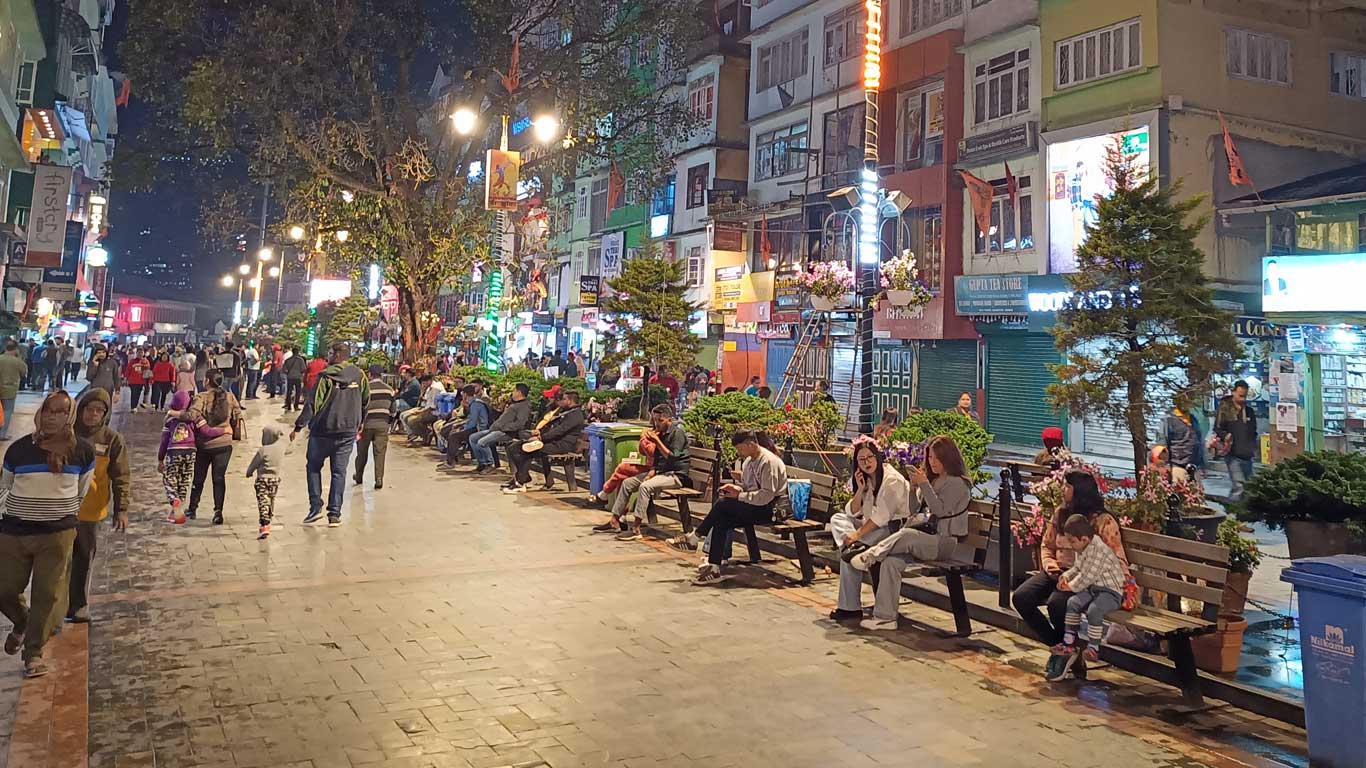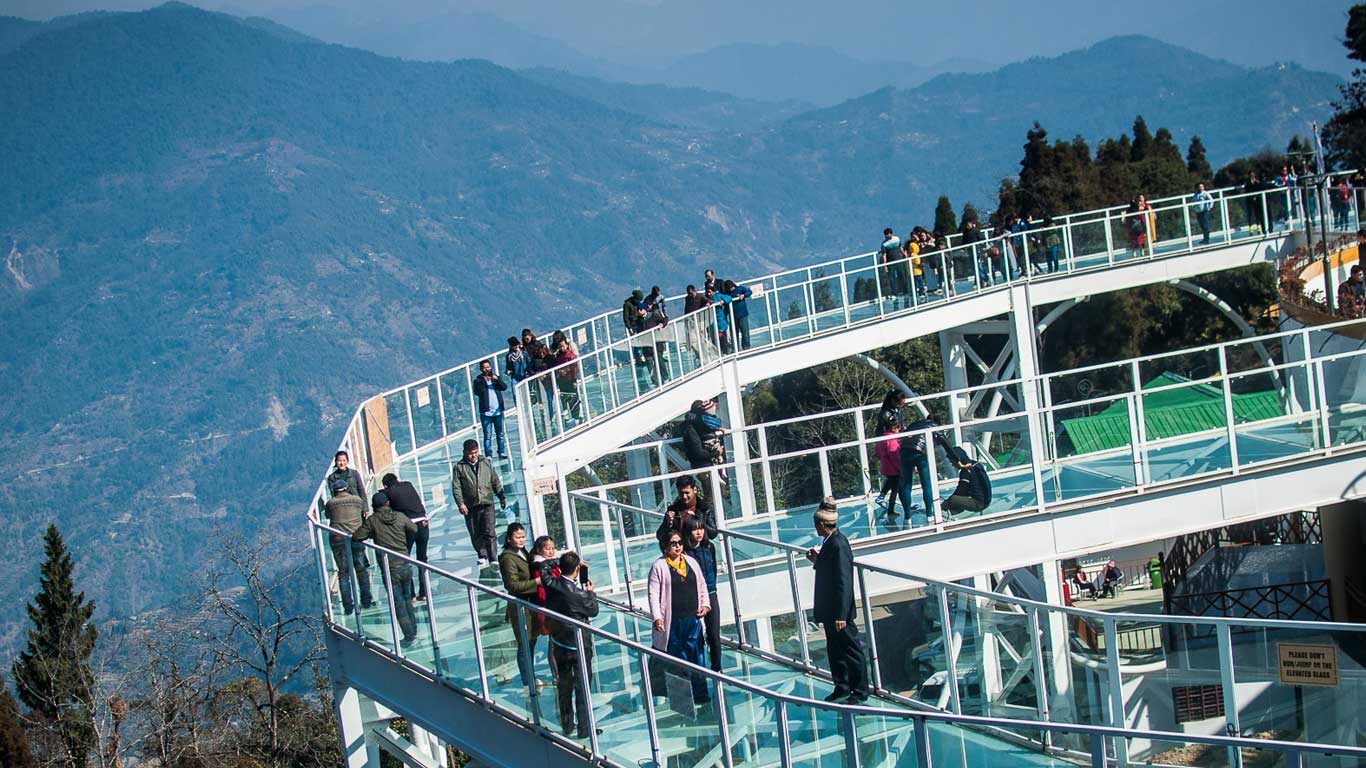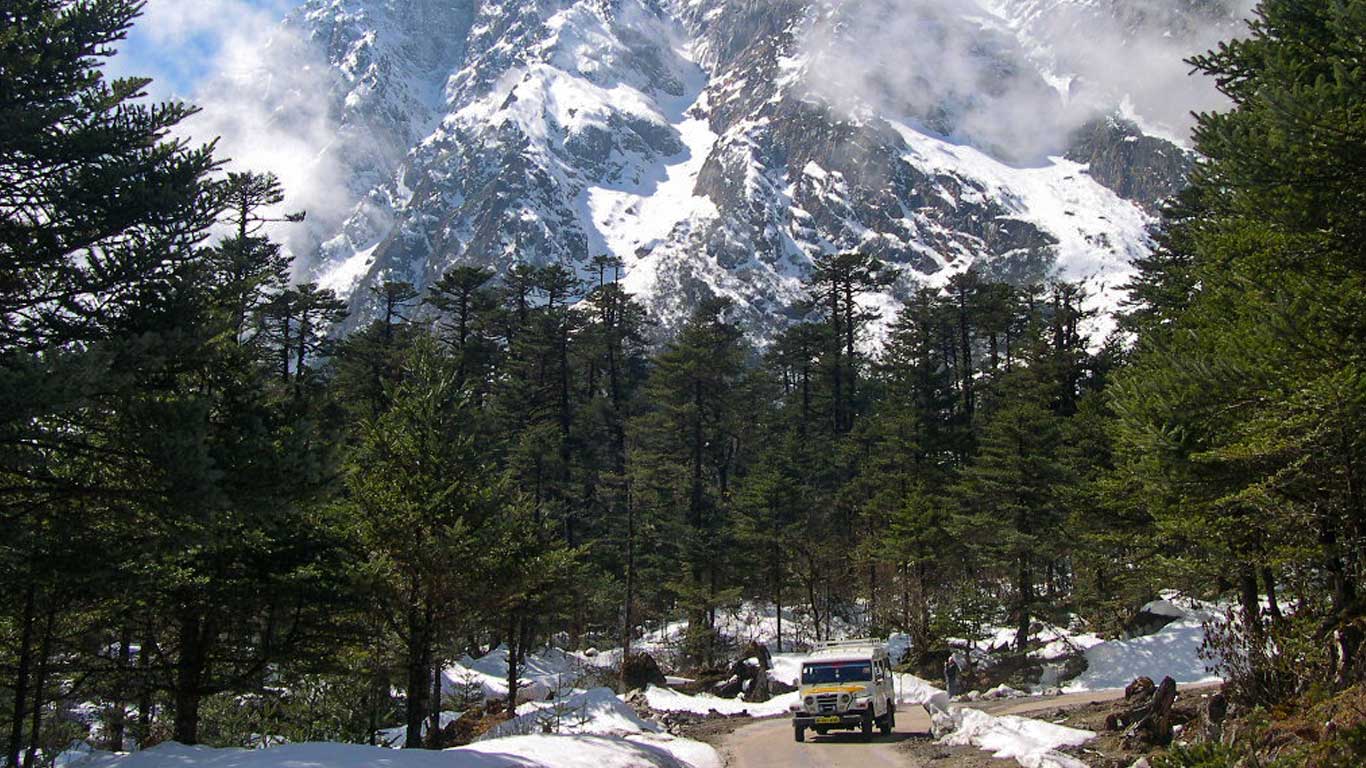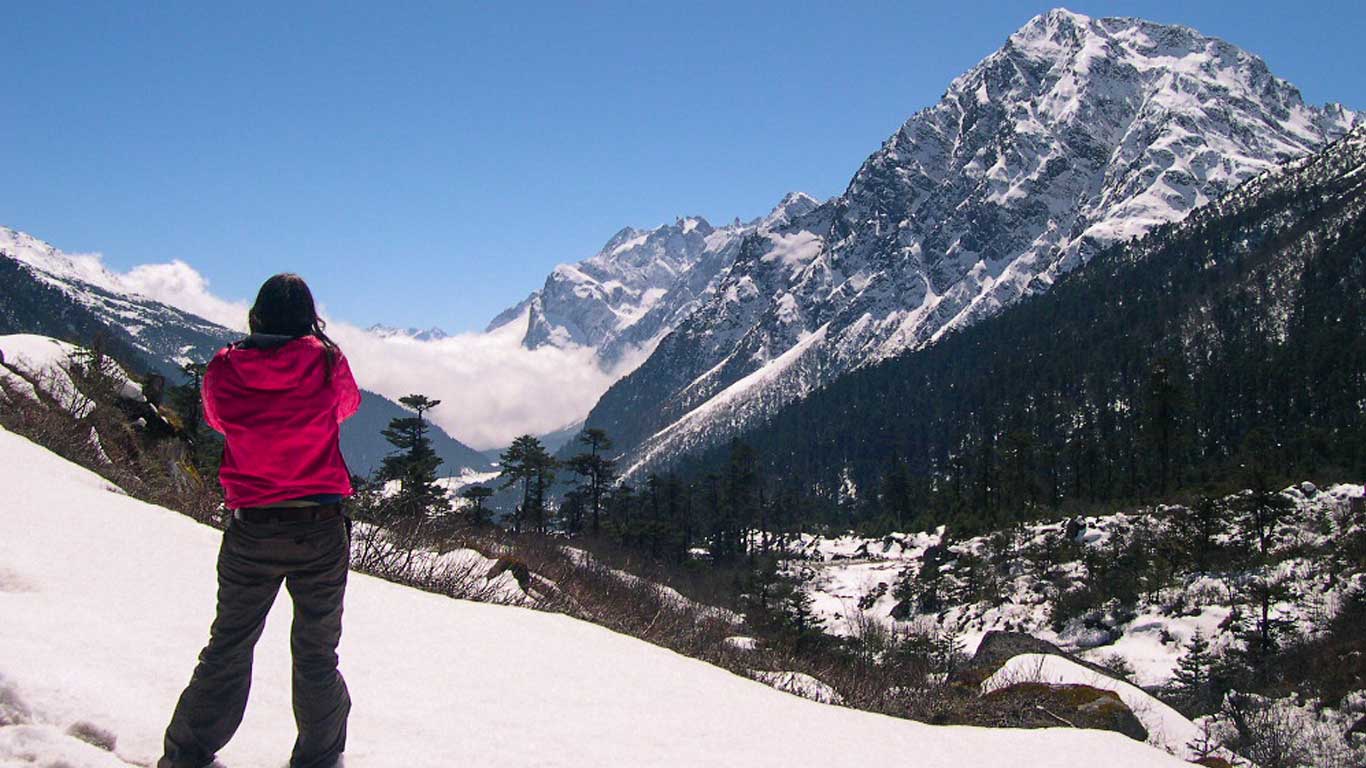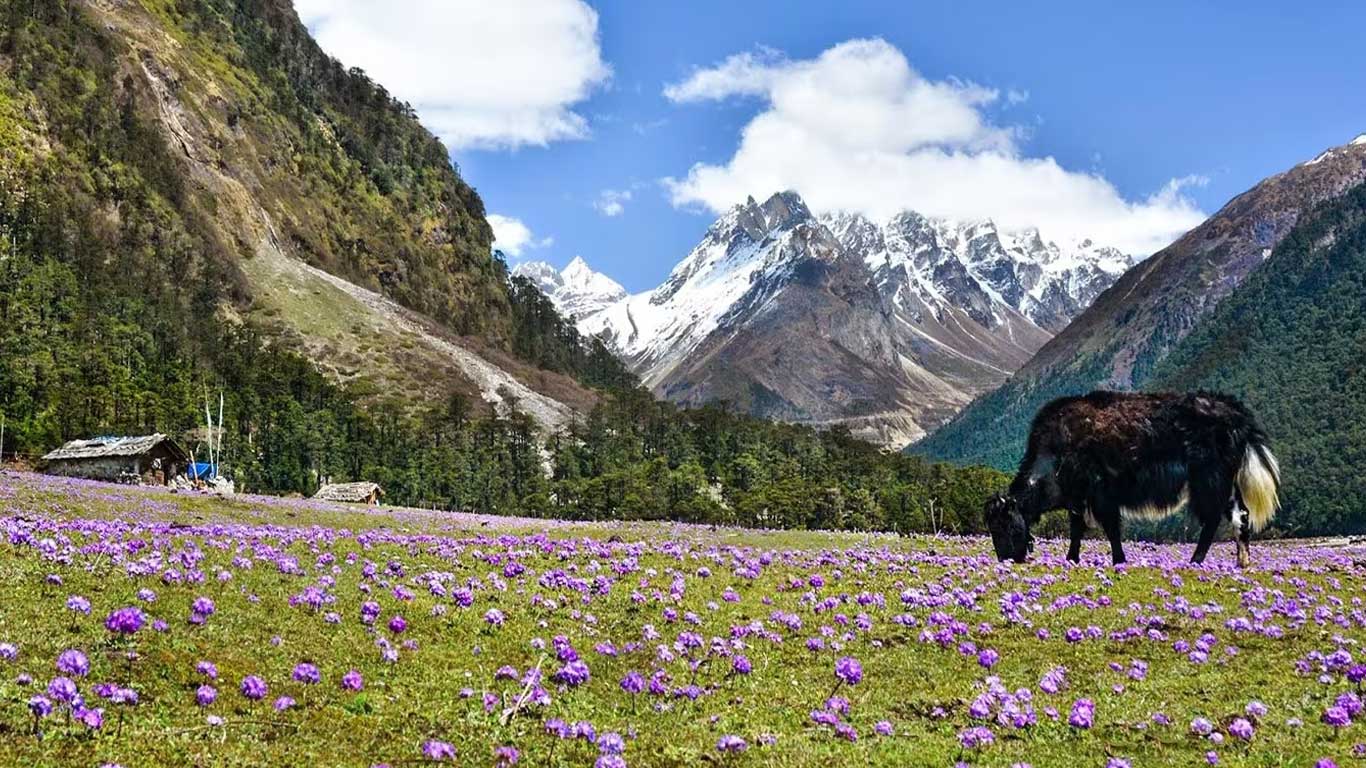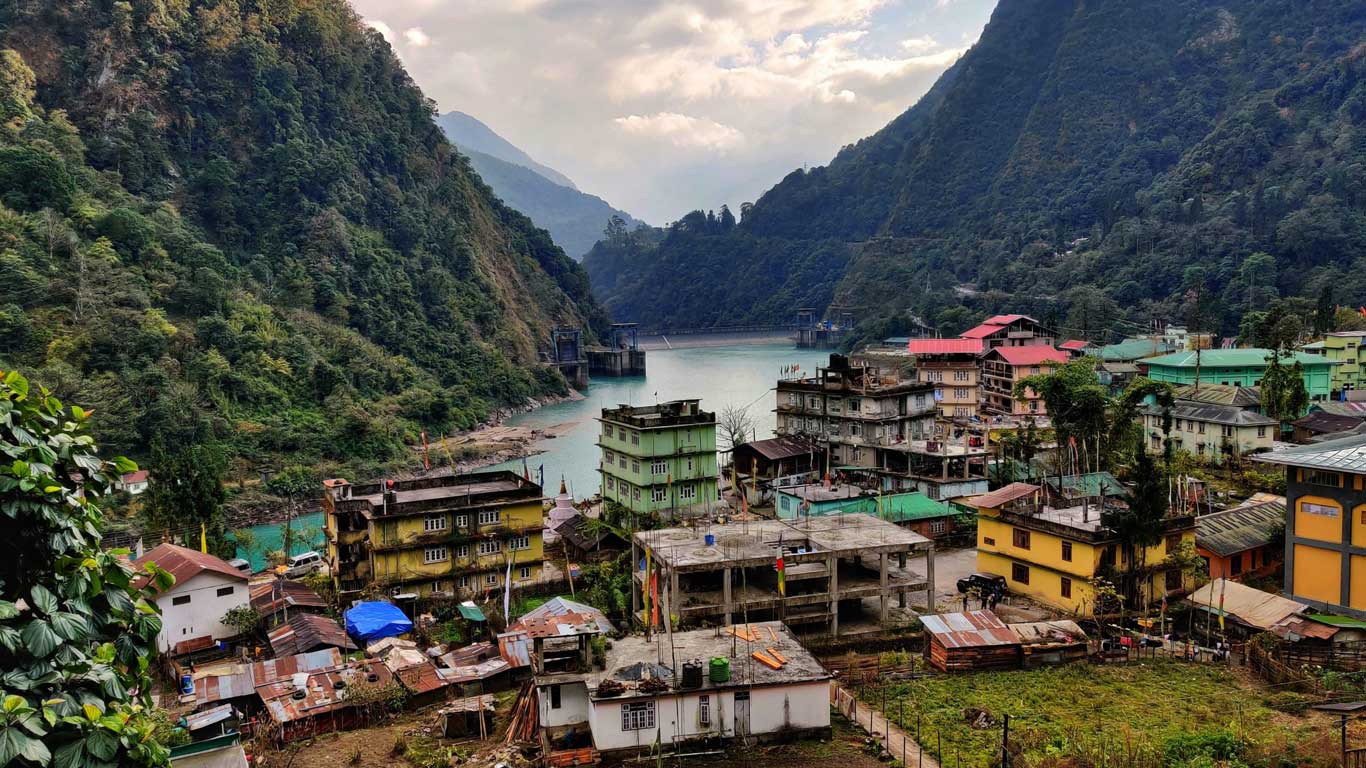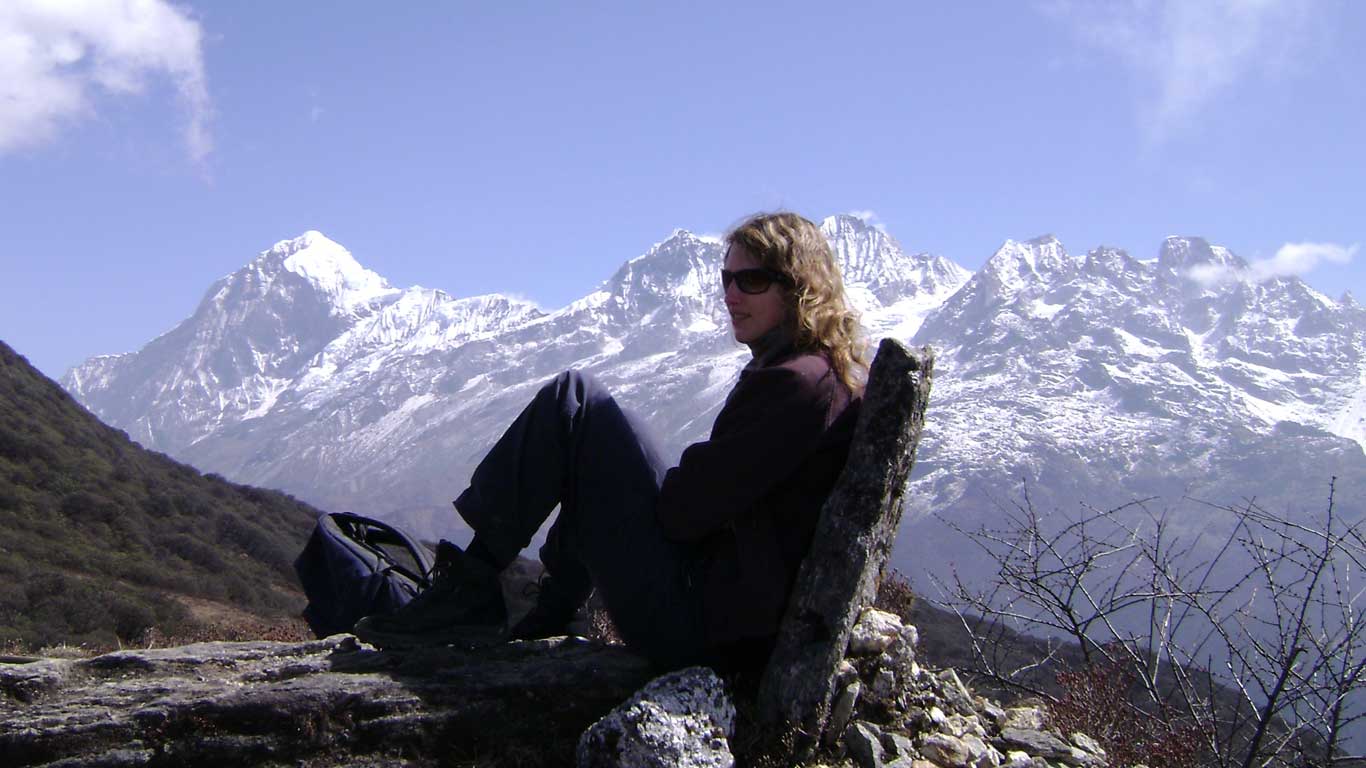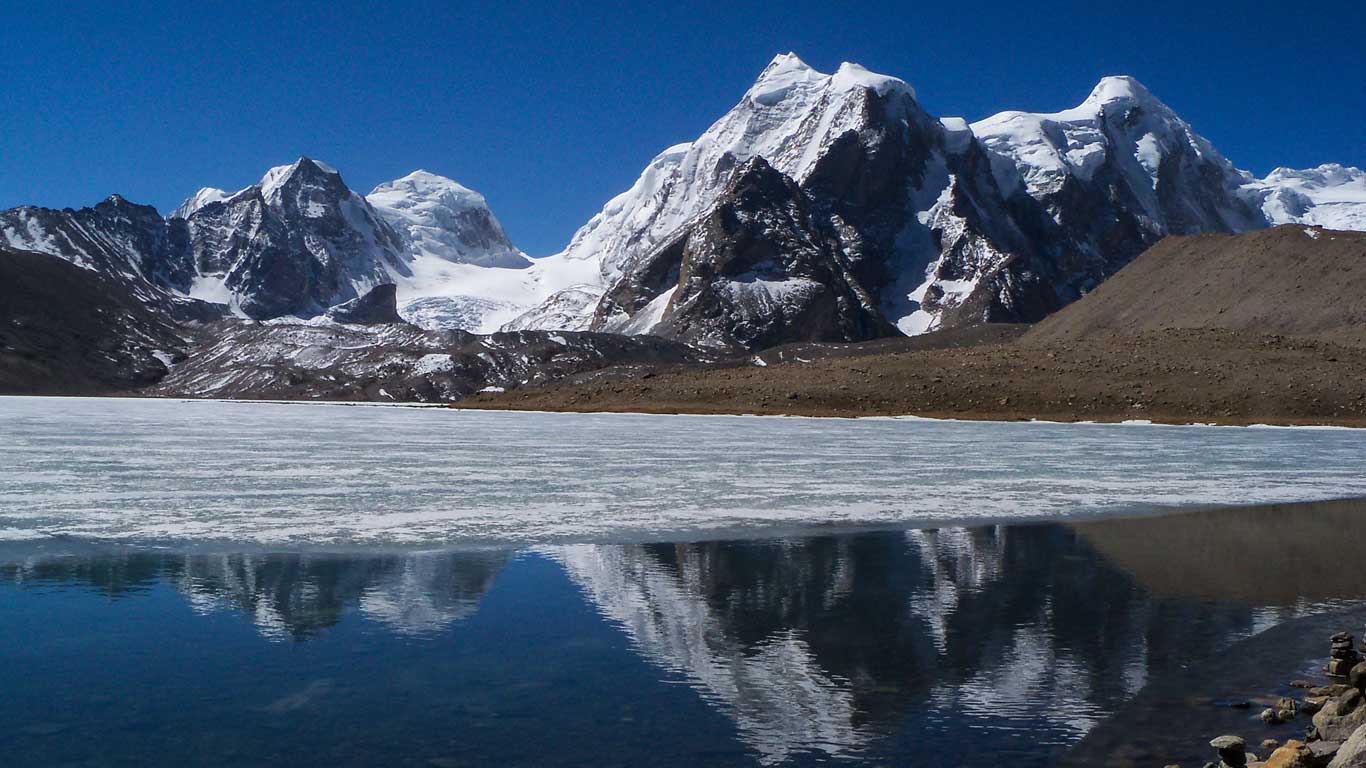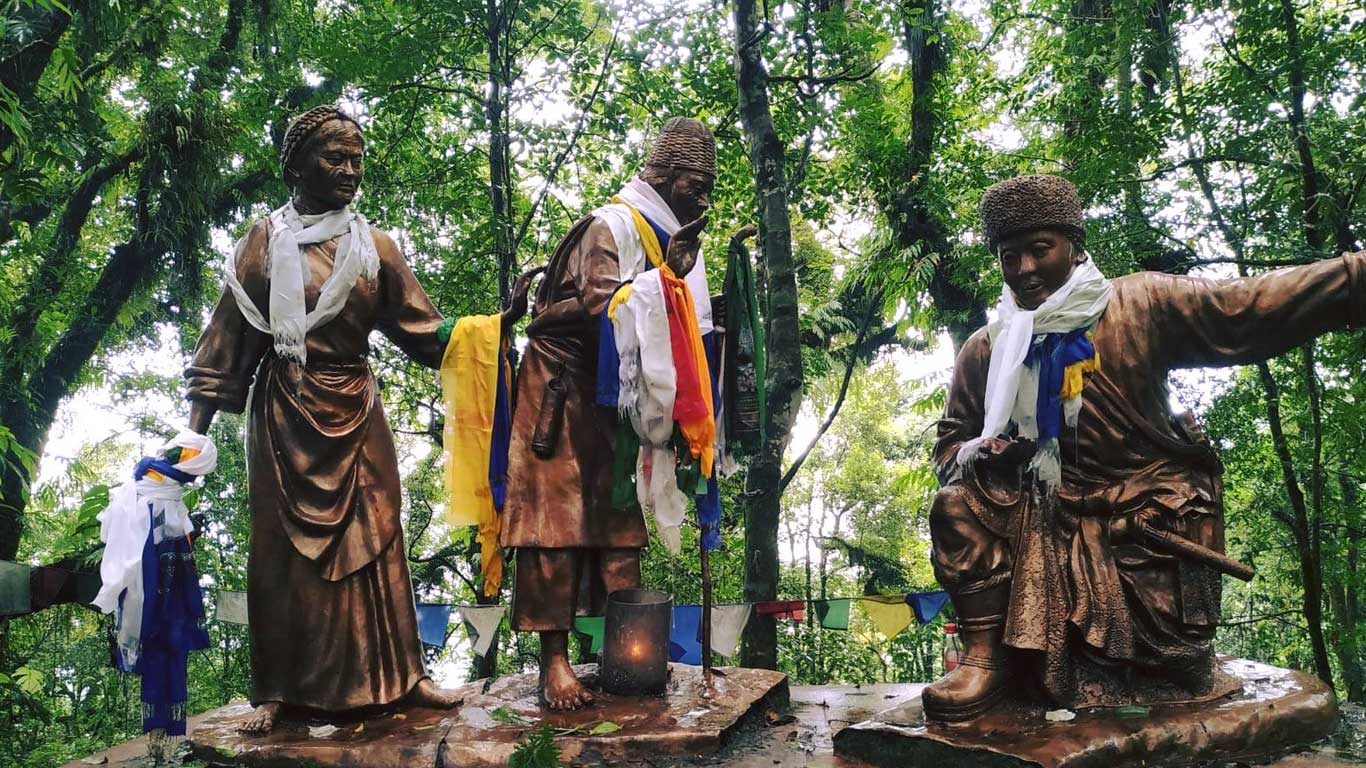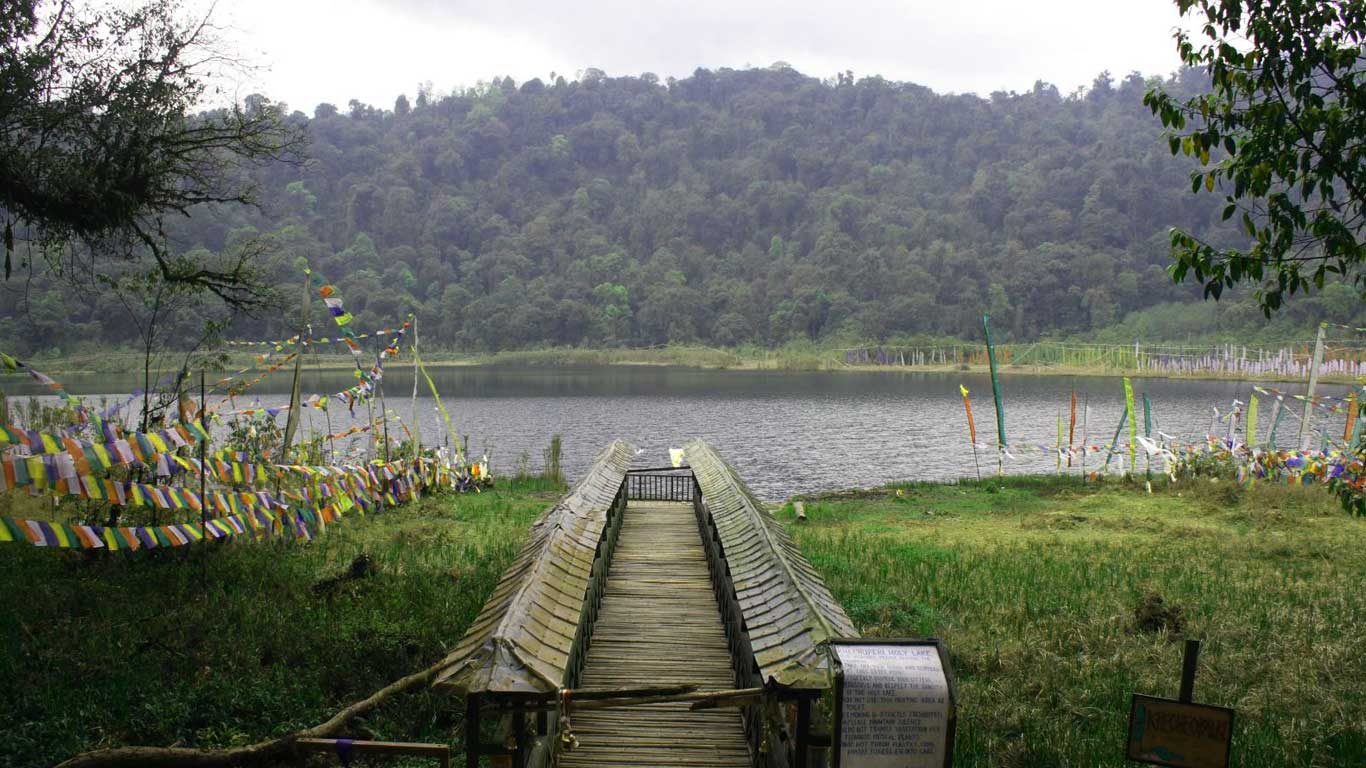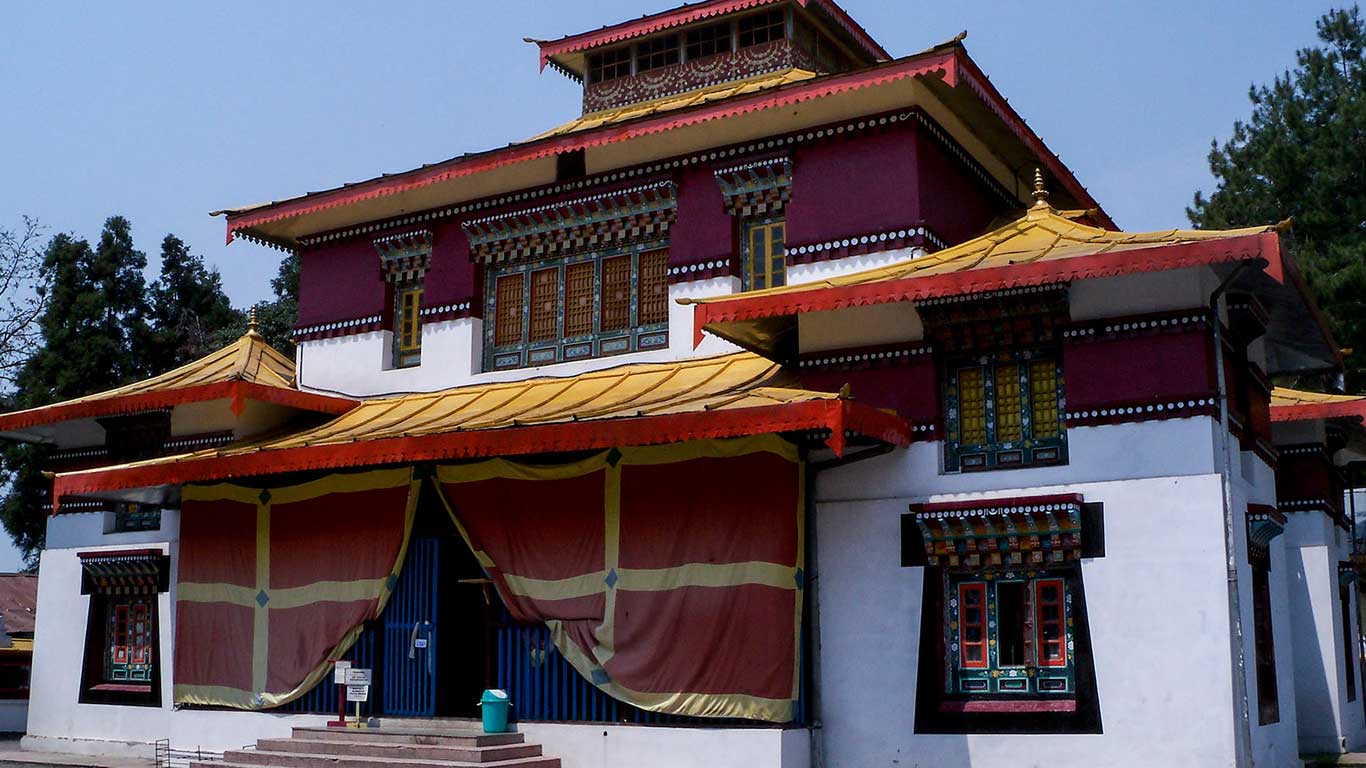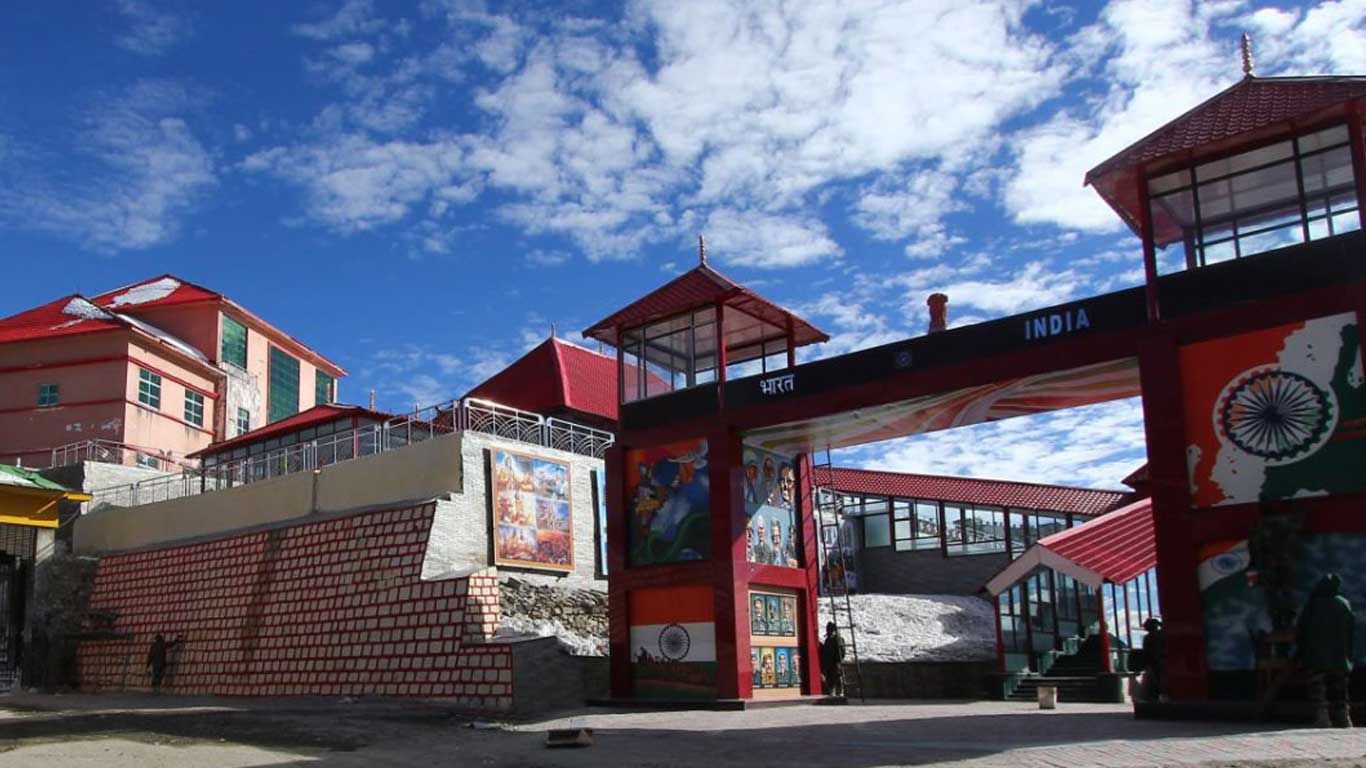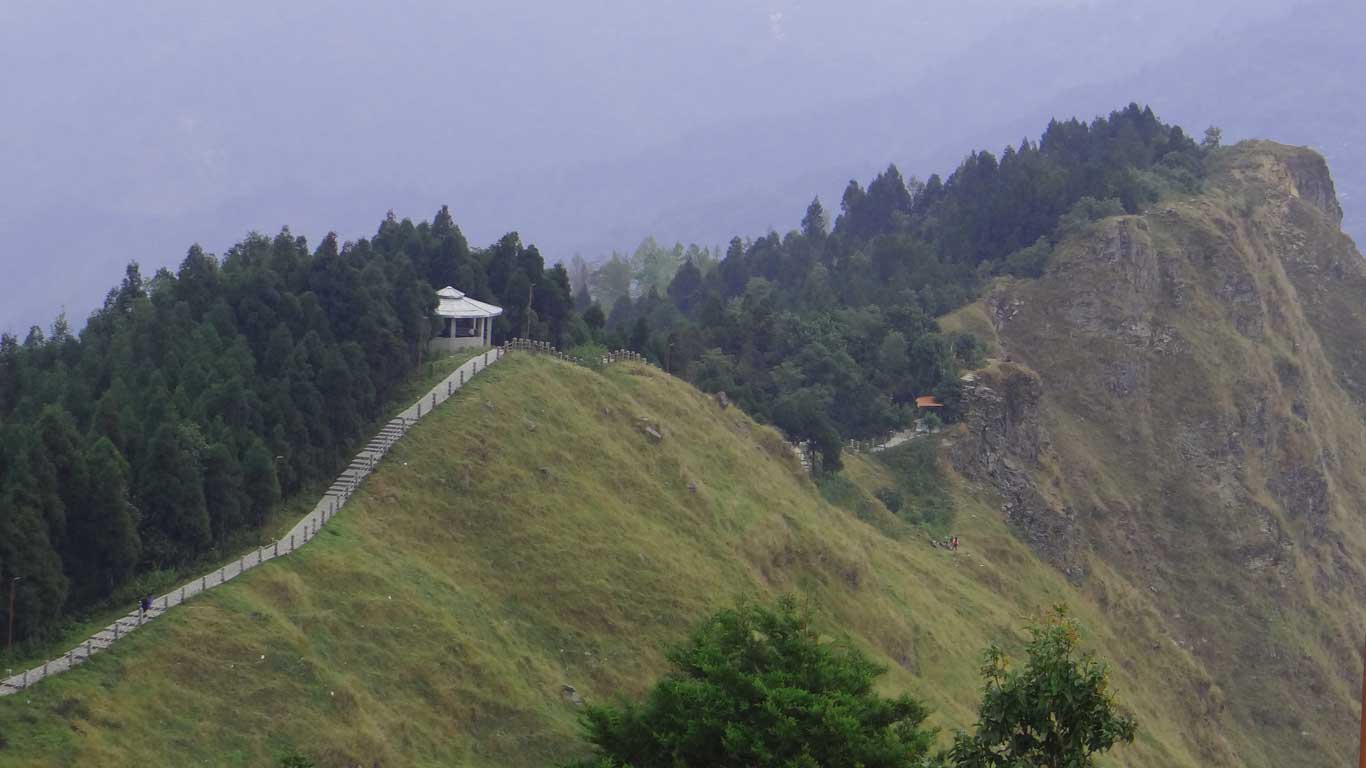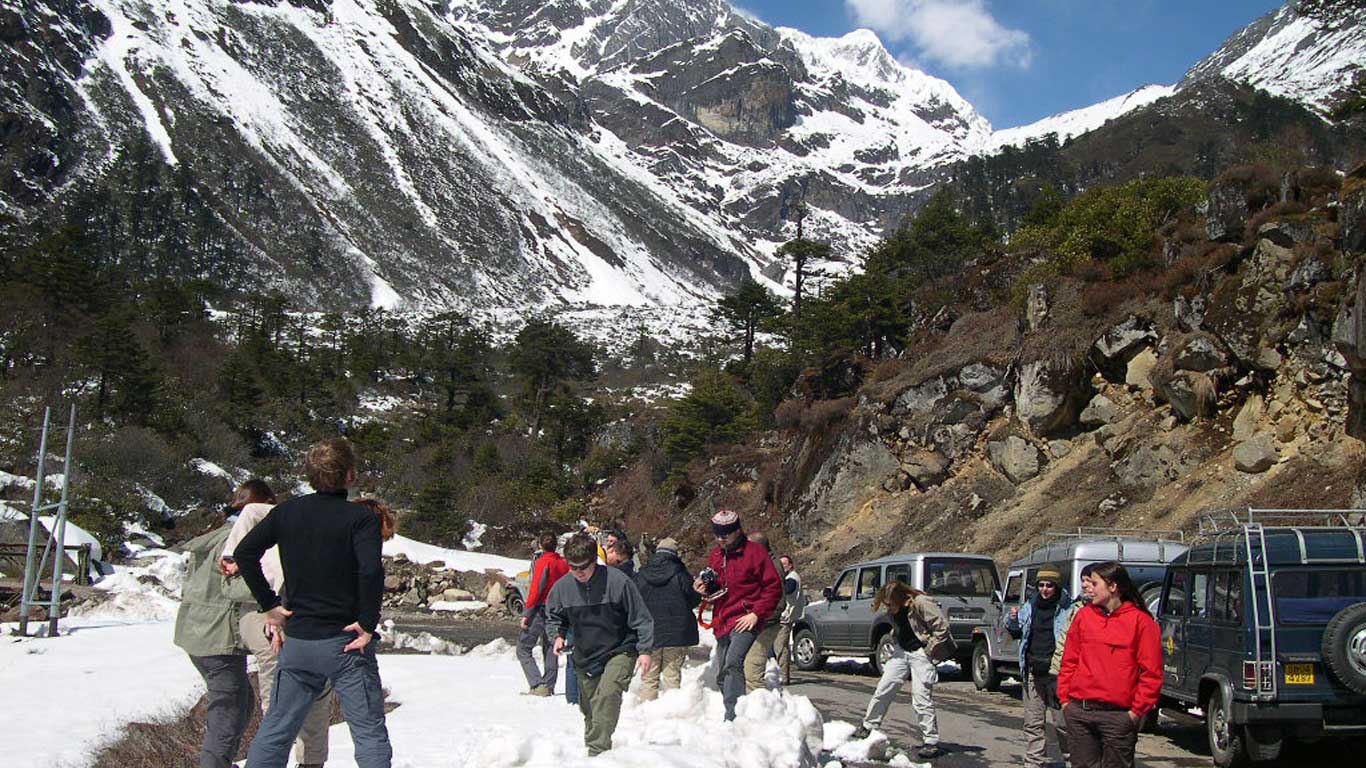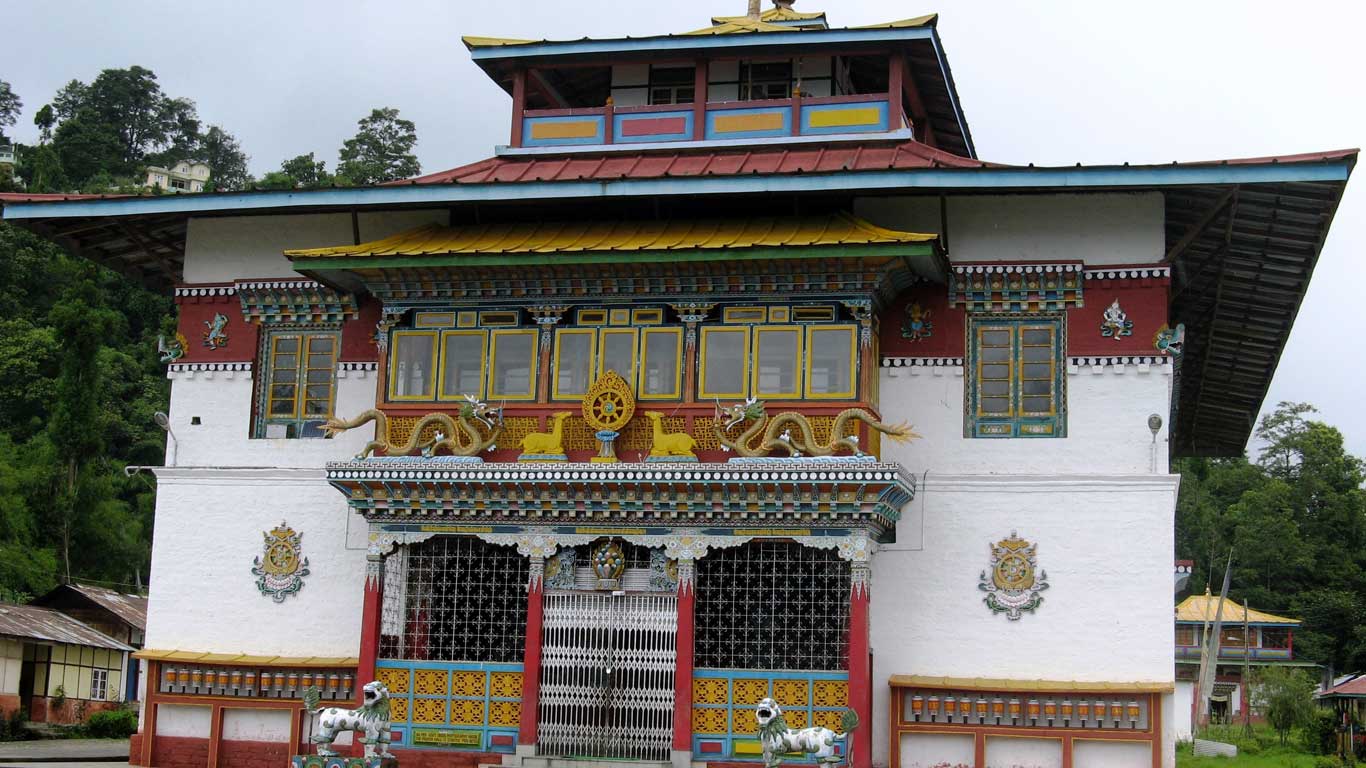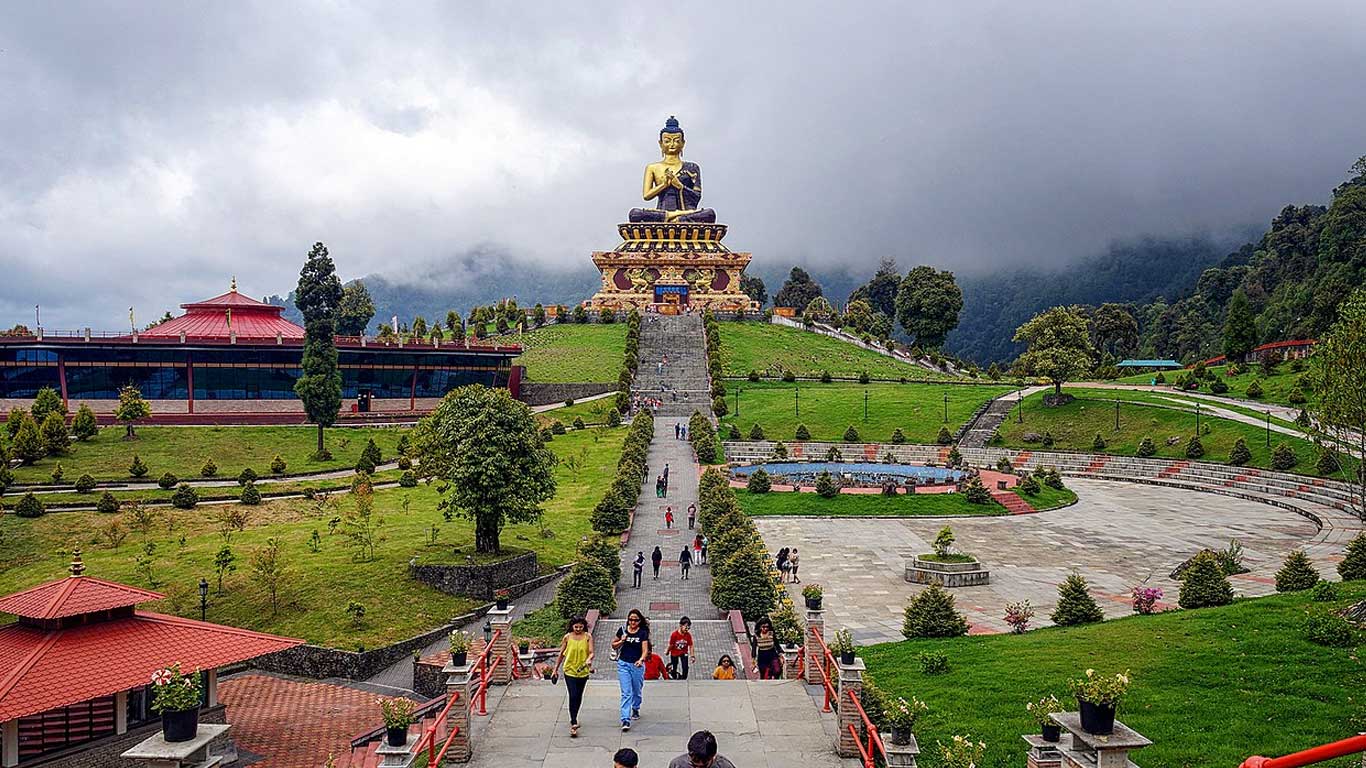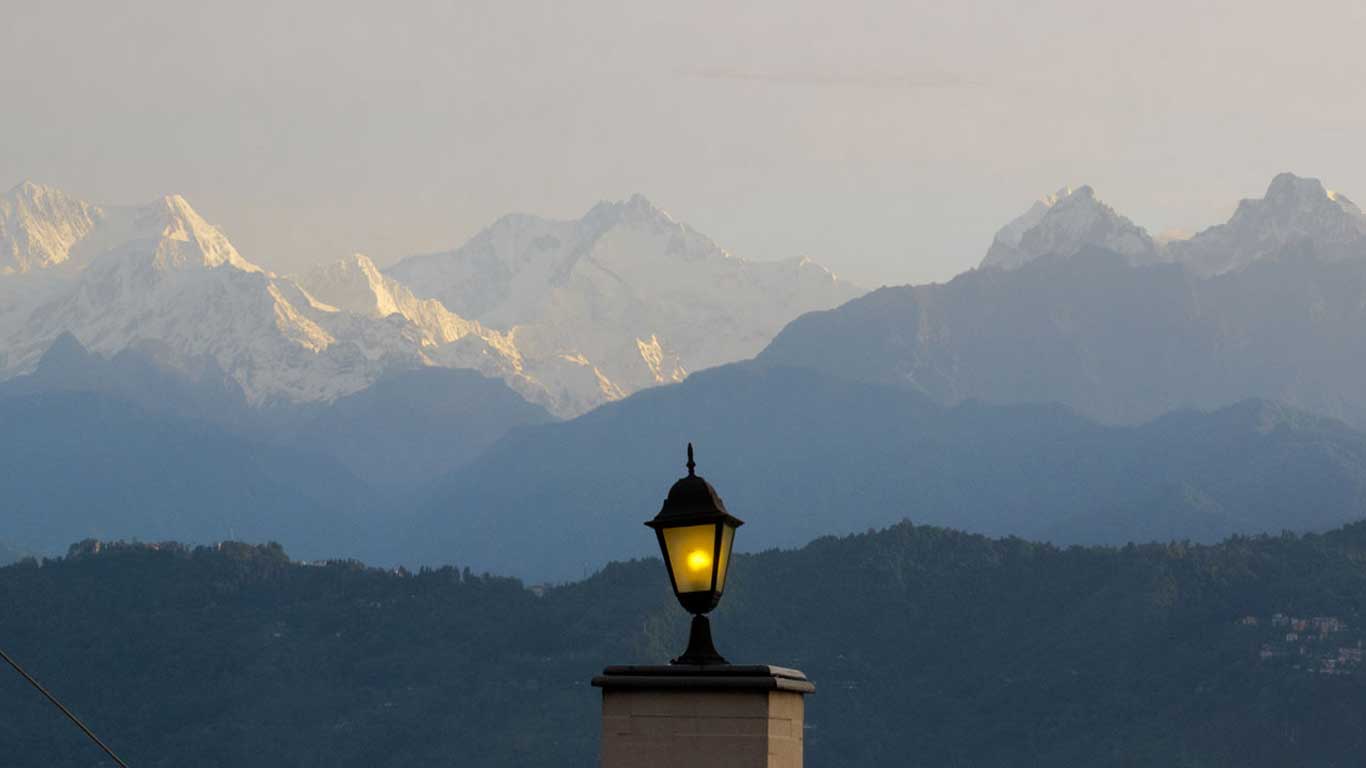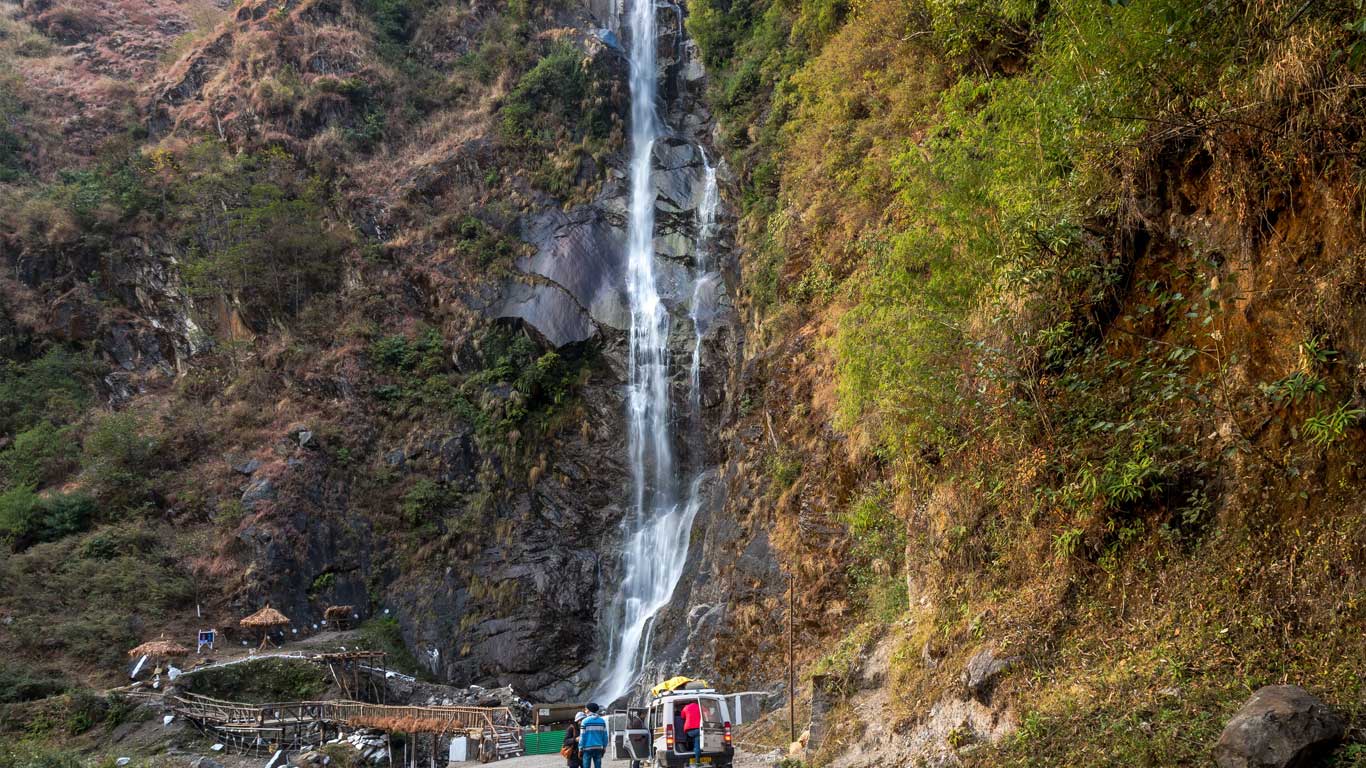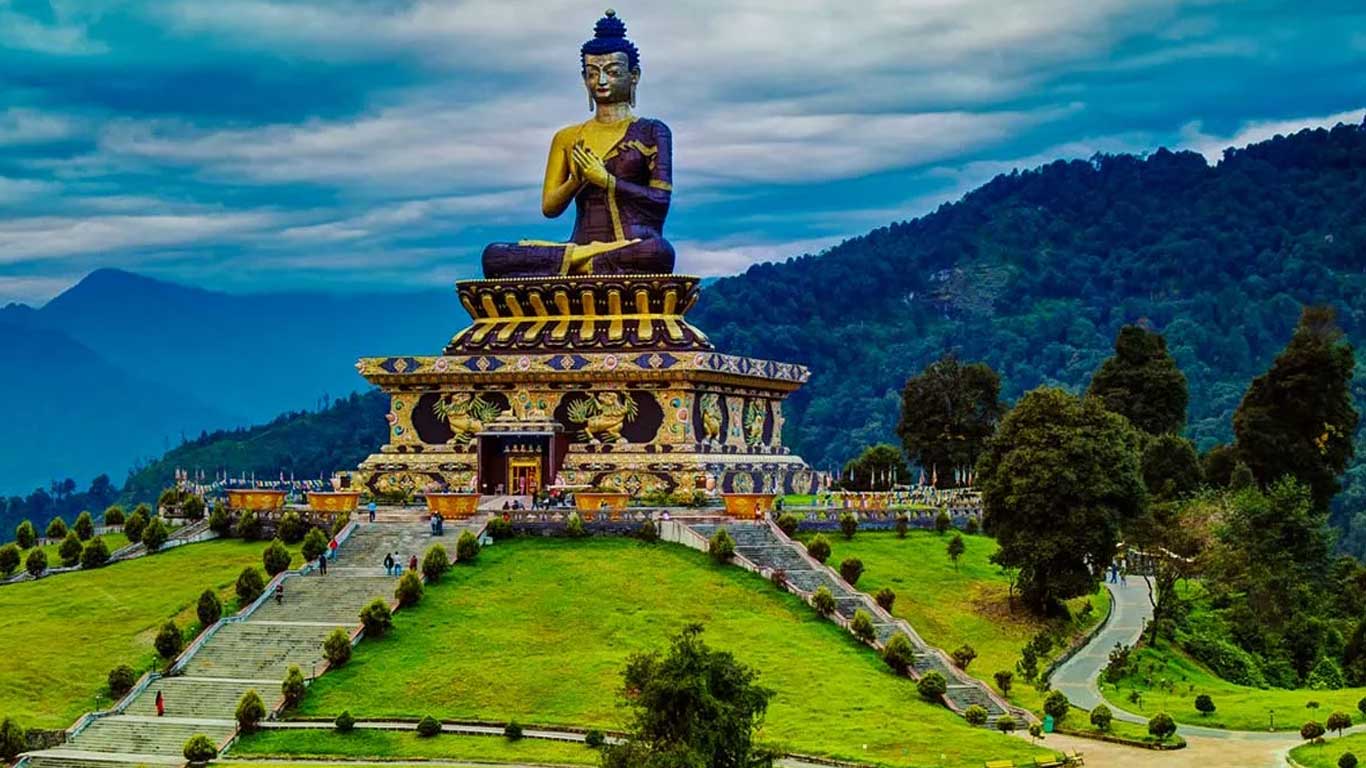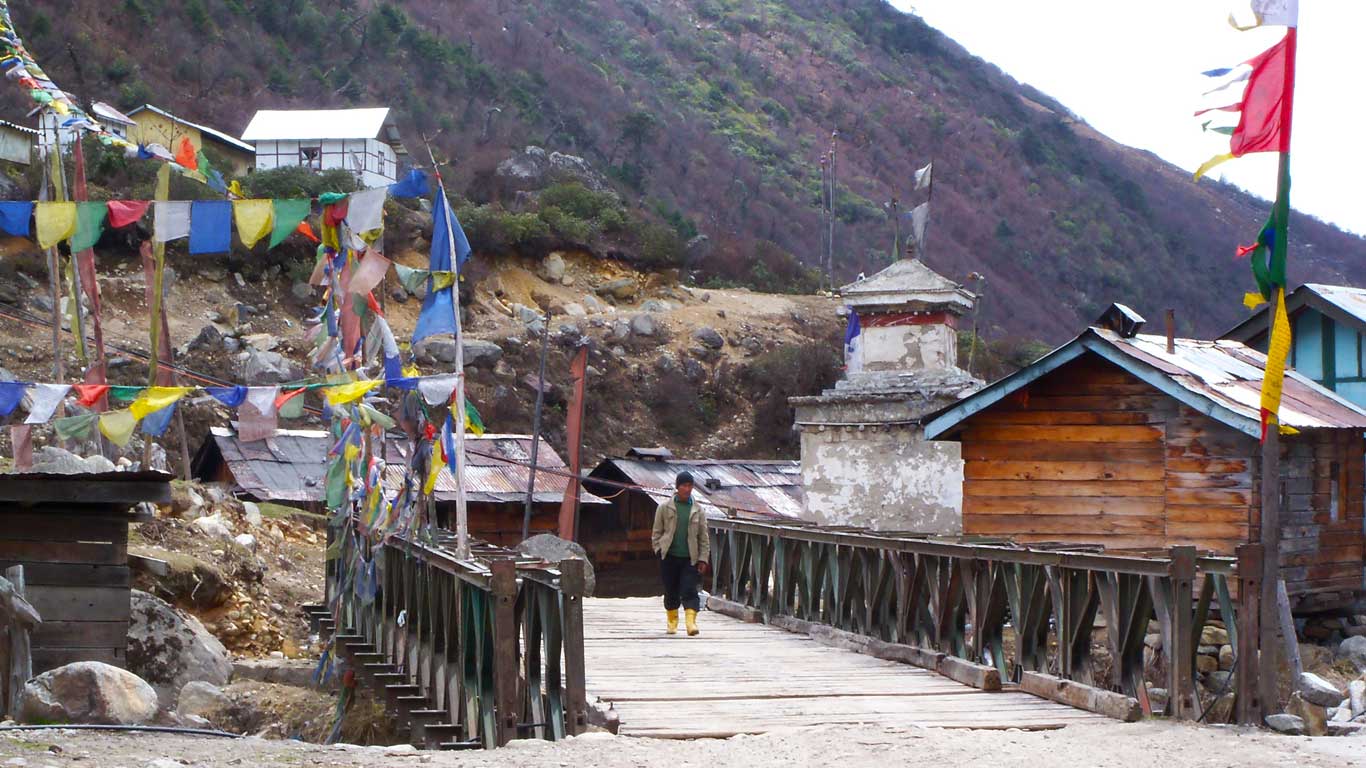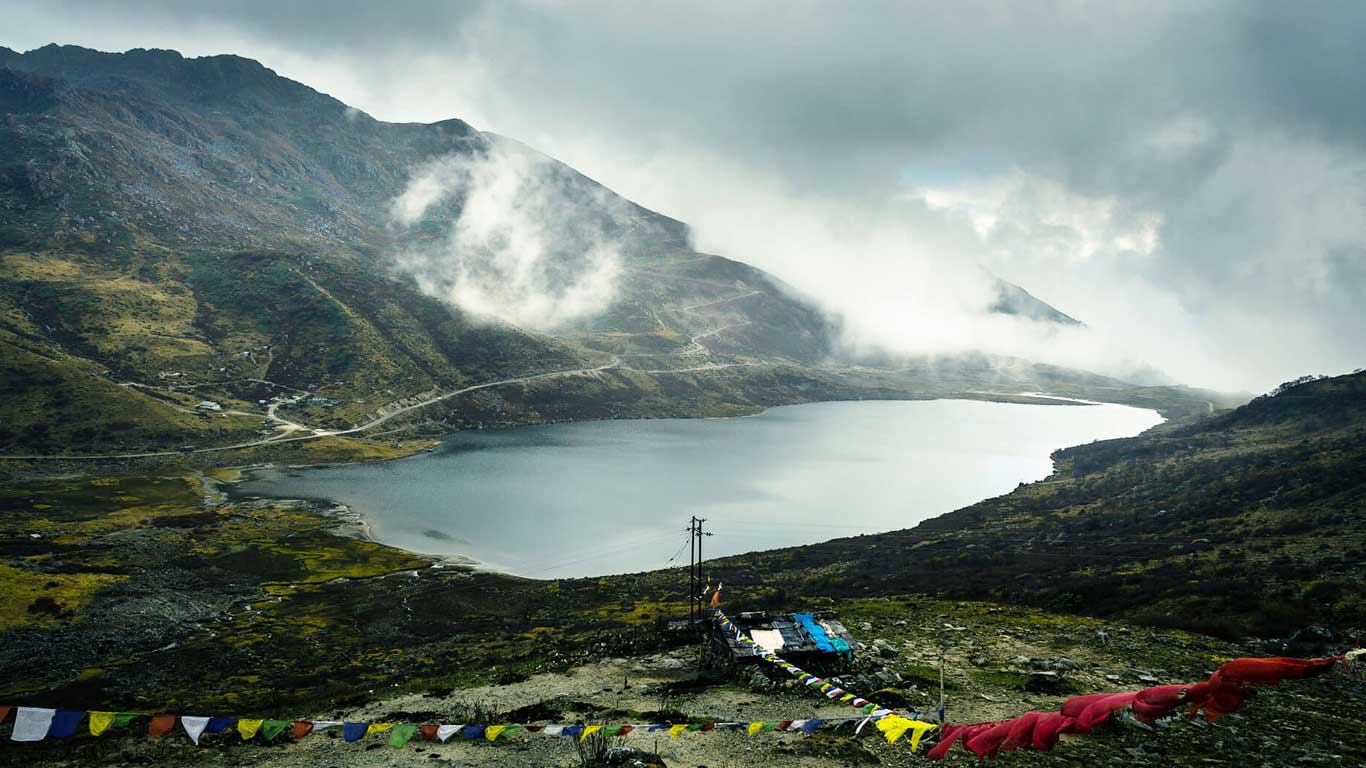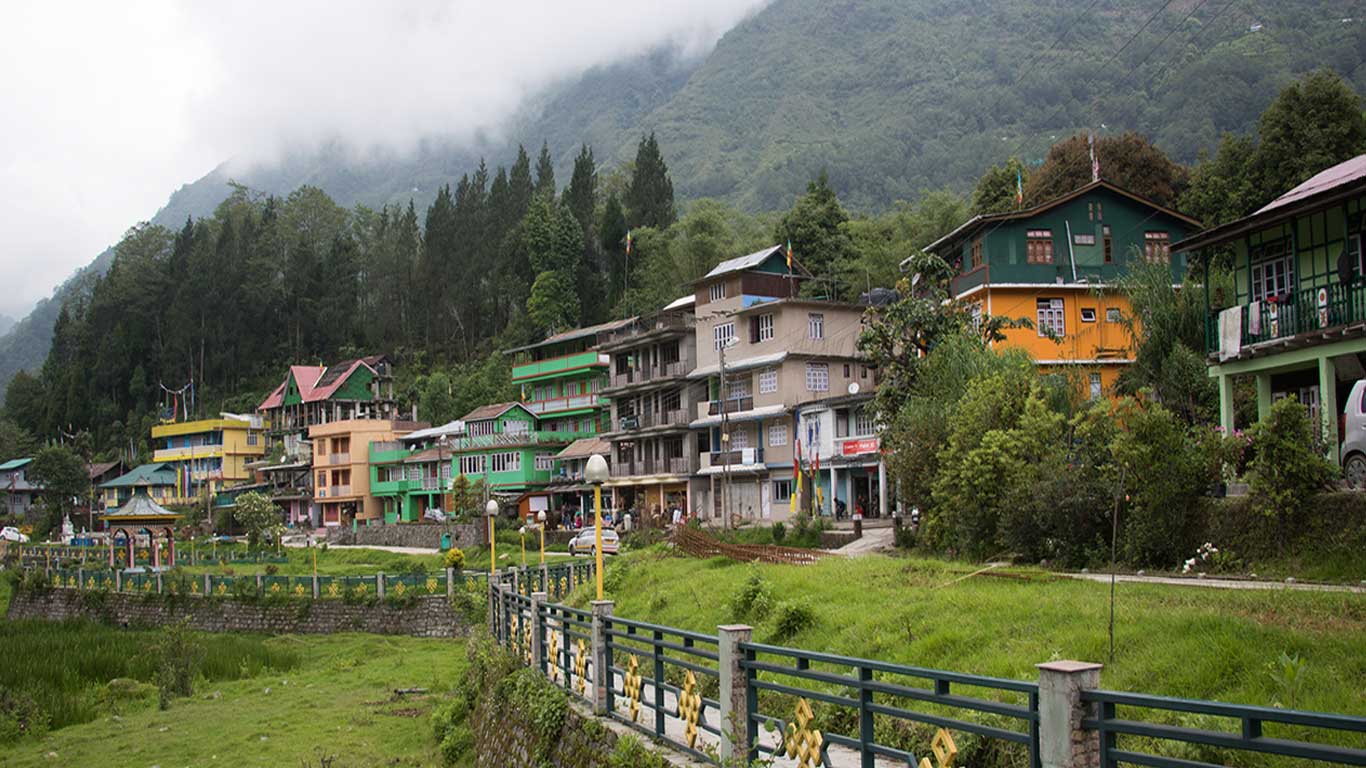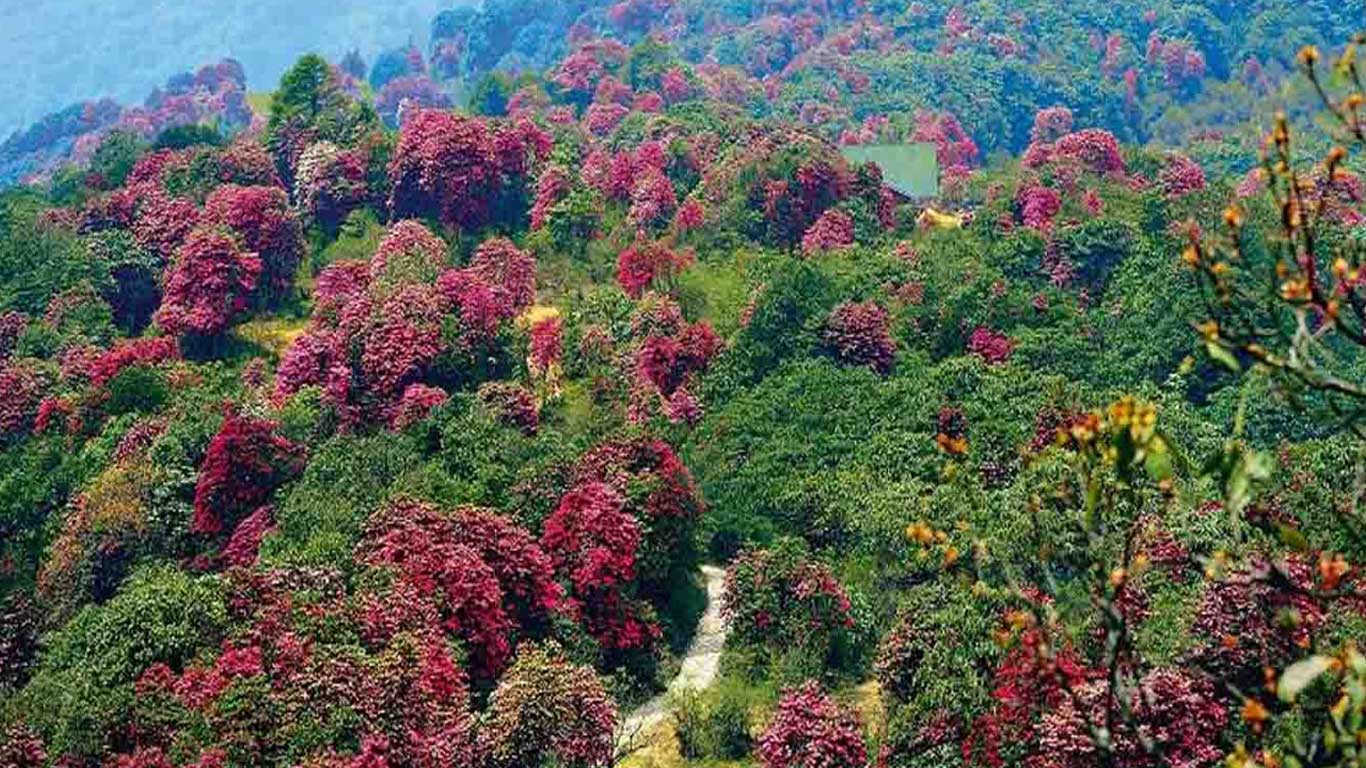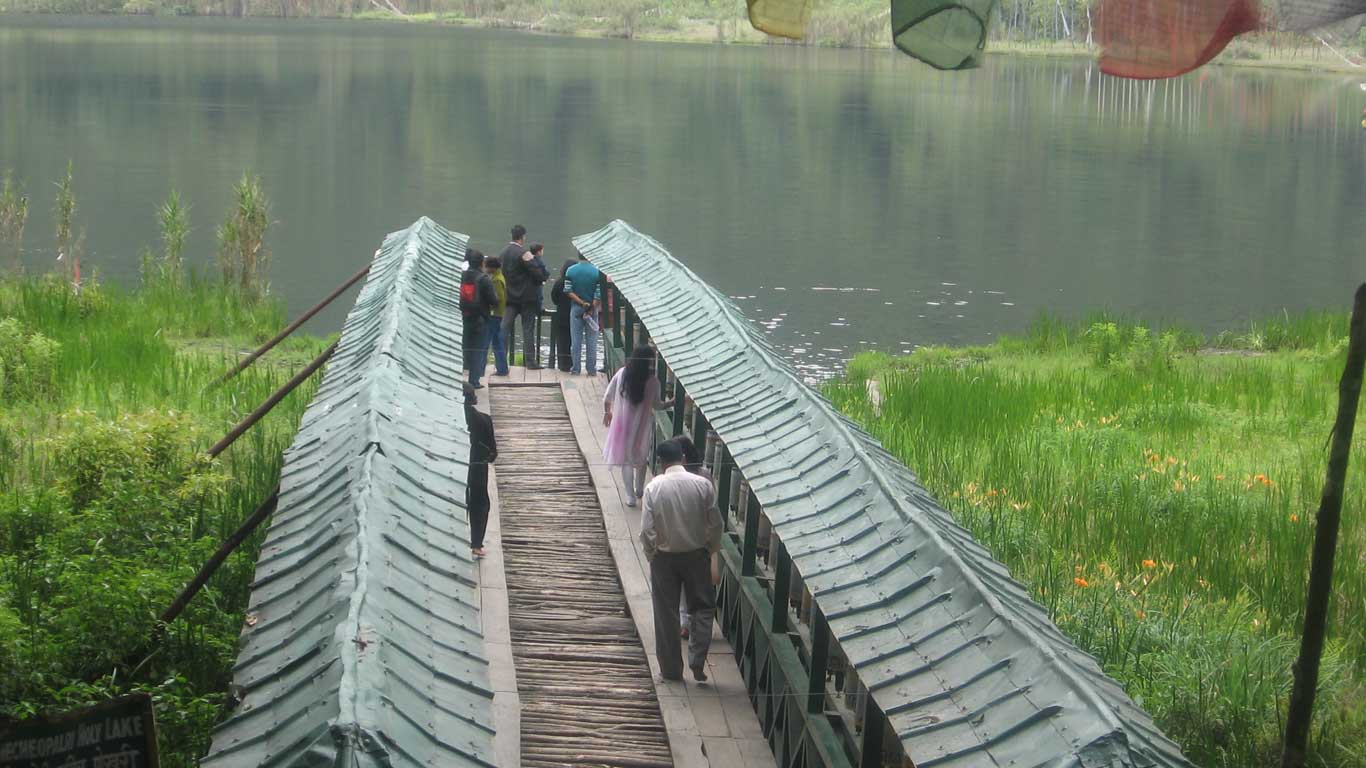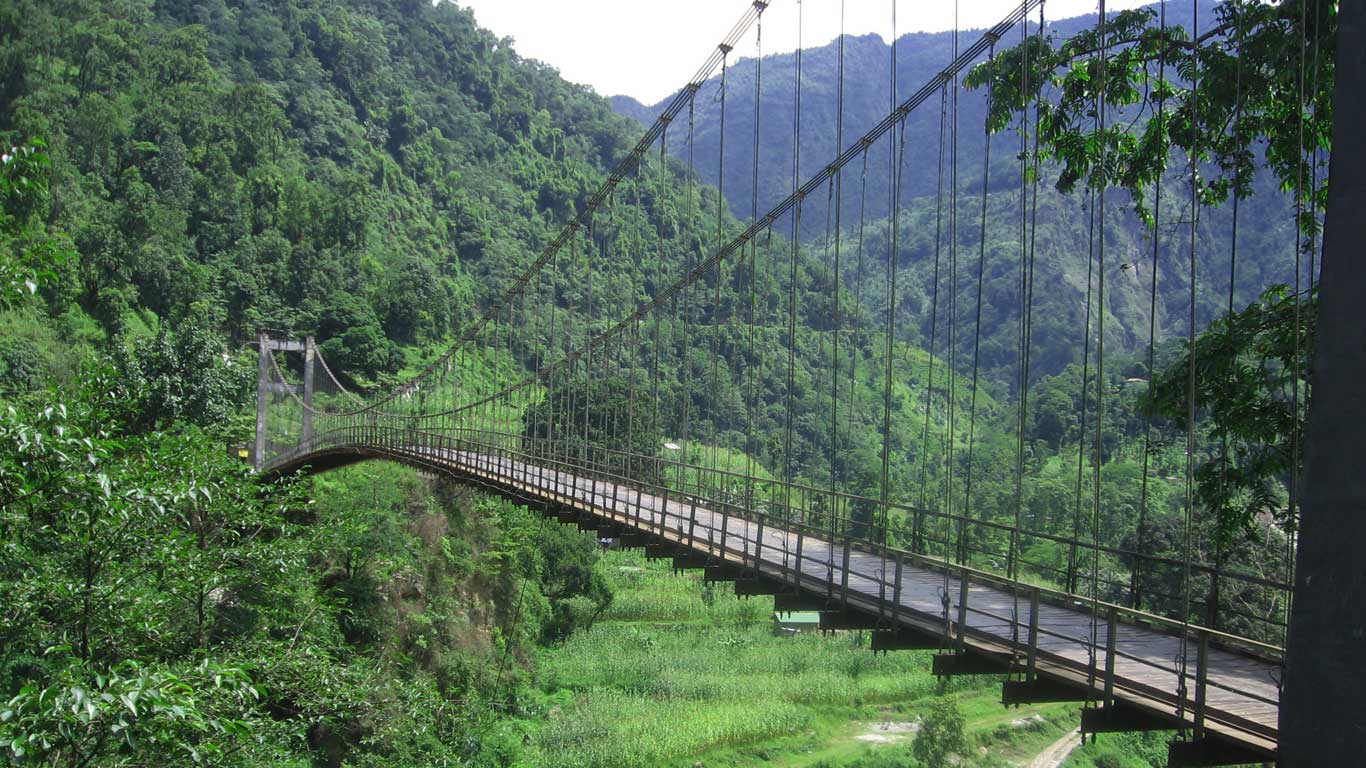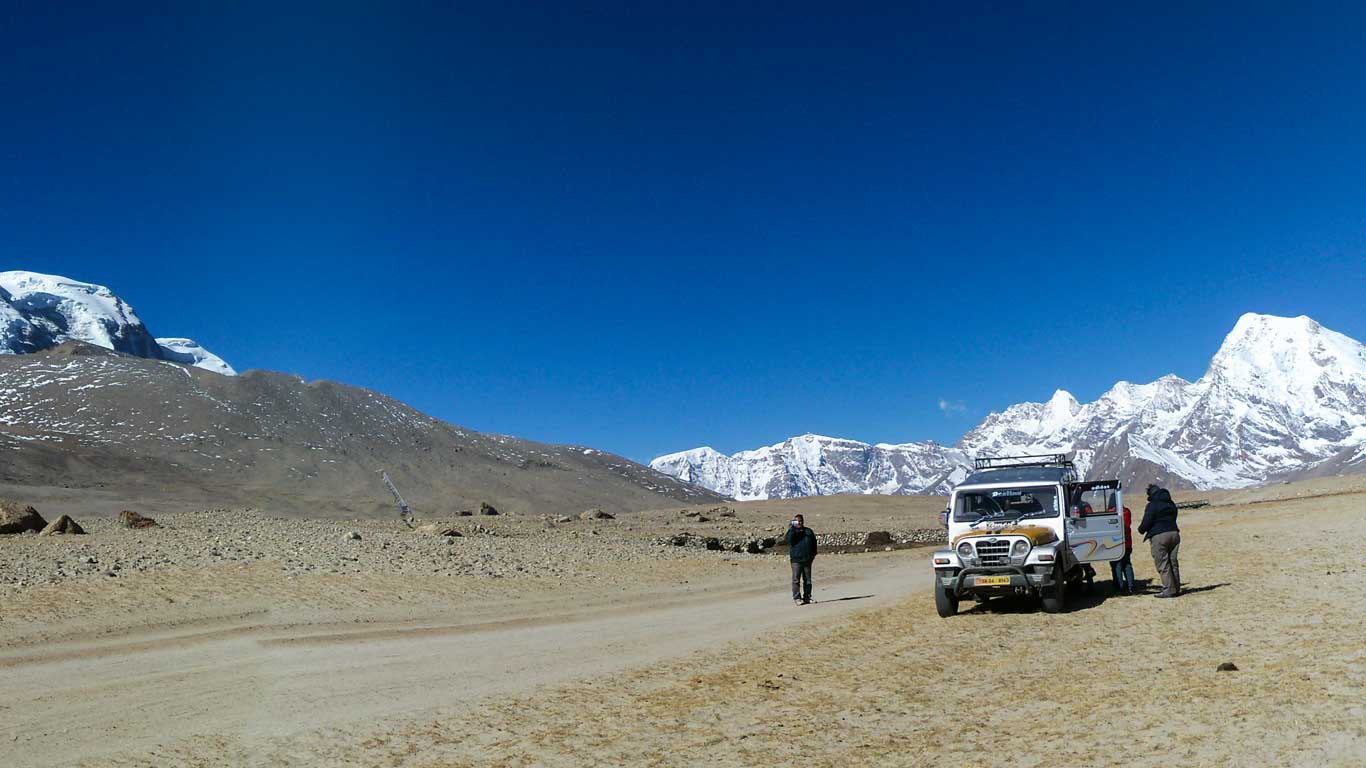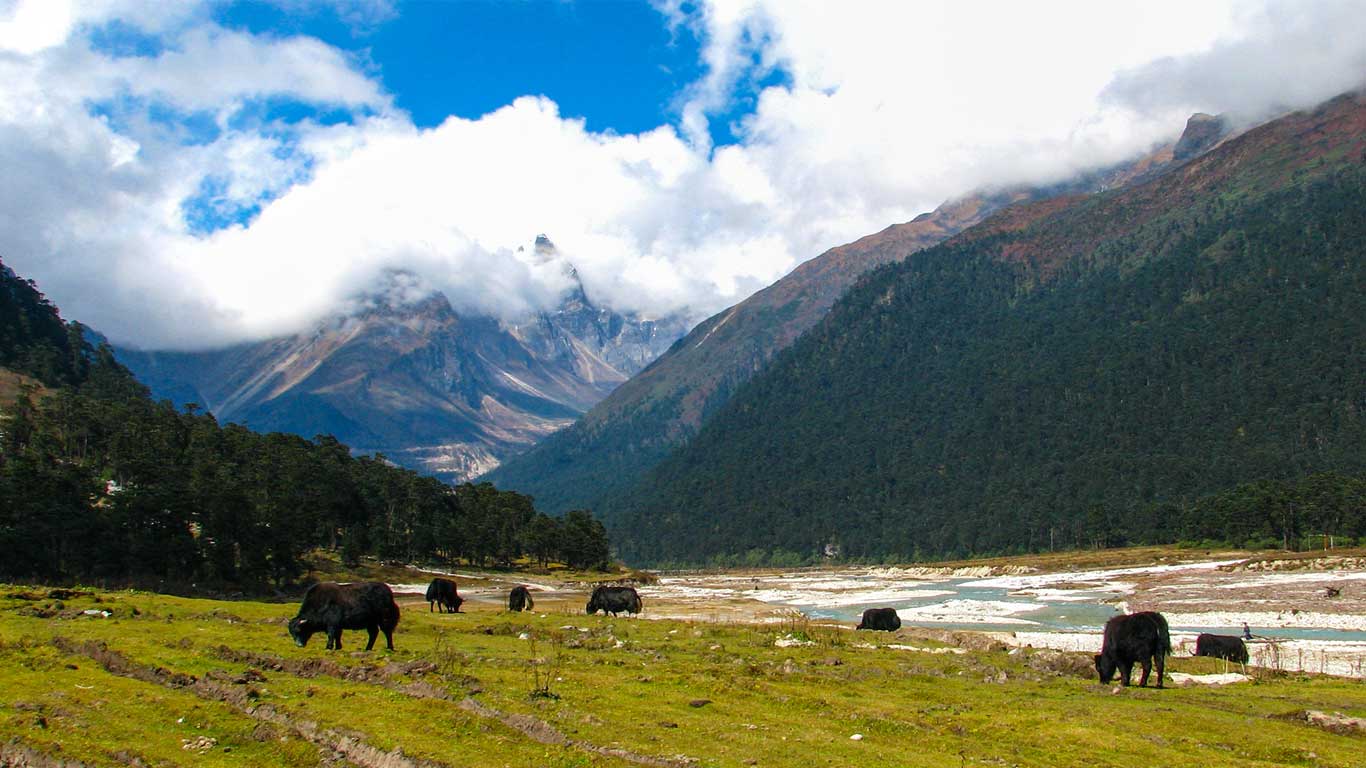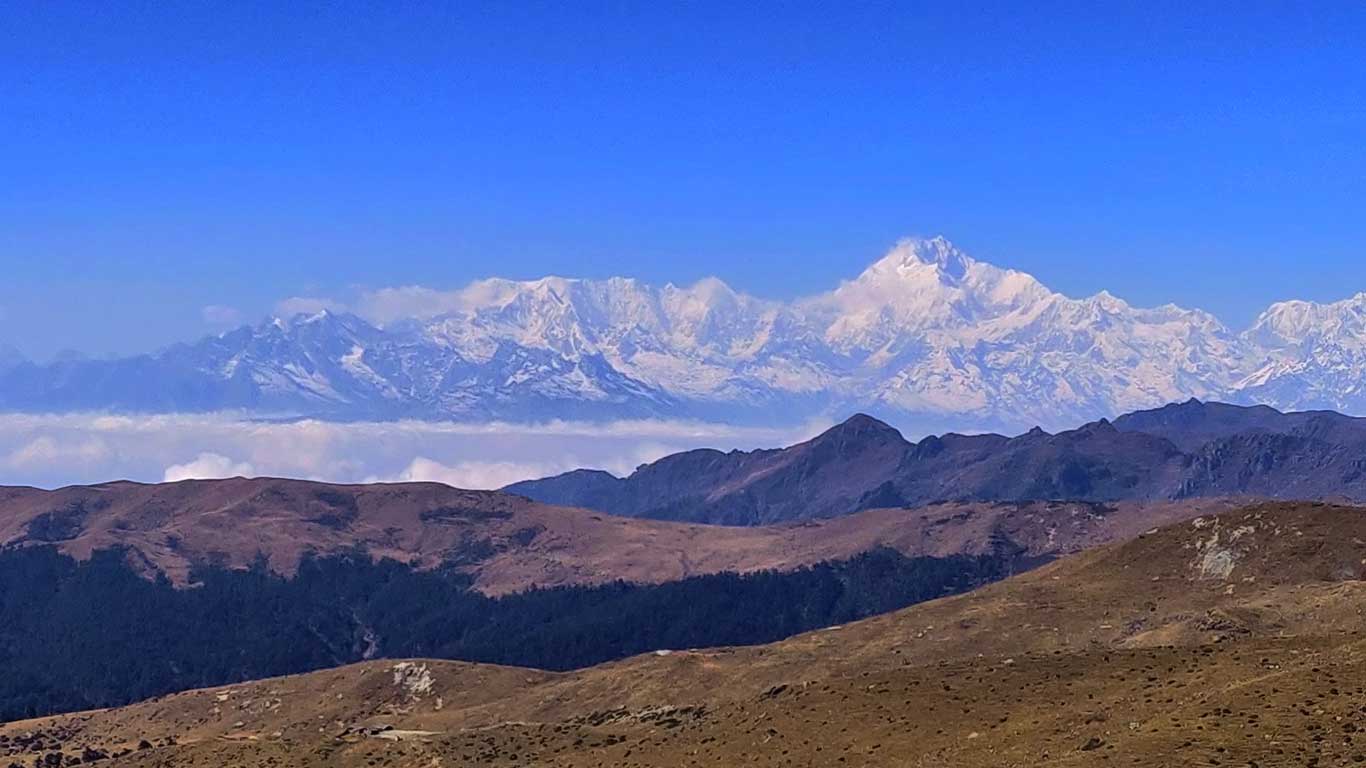Sikkim
Sikkim is an Indian state in the northeast of the country. The Himalayan state borders Chinese Tibet in the North, Nepal in the West, the Indian state of West Bengal in the South and Bhutan in the East. It is one of the smallest states in India and has a population of just over 6,00,000. Tourism is the main industry in the state. The annual tourist inflow in the state has surpassed the population of the state.
The state is legendary for its peaceful nature and simplicity. Famous for Kanchenjunga, the third highest mountain in the world at 8586m, the mountain state offers a tremendous variety of plants and wildlife besides a diverse ethnic mix of people with rich cultural traditions.
Tourism in the state
Tourism in Sikkim gained popularity during the last decade with an increasing number of tourists visiting this hilly region for its natural beauty. Till the early ’90s, few tourists would visit this landlocked state. Even those who visited hardly went beyond Gangtok, the state capital. During the last two decades, tourism has seen a major boost in the state with close to a million tourists visiting Sikkim every year.
Getting There
Bagdogra (120 km from Gangtok) is the major airport in the region. Regular flights connect Bagdogra to major airports in the country. New Jalpaiguri Rail Station (115 km from Gangtok) also known as NJP is the major railhead. All trains travelling to the North East passes through NJP. Siliguri (110 km from Gangtok) is the main junction where Road, Air, and Rail traveller gets down before travelling to Sikkim.
There are two main entry points. Tourists visiting East and North districts including the capital Gangtok, enter Sikkim through Rangpo. The other major entry point is through Malli which is the entry point for the West and South districts.
Permits and entry rules
Indian tourists do not require any permit to enter the state. However, some of the tourist destinations are known as ‘Restricted Areas’ and Indian tourists also require a permit to visit these 'restricted' places. These places include the Nathula - Tsongo Lake – Zuluk – Memenchu area in the East, the entire North district, the Dzongri – Goechala area in the West district etc.
The State of Sikkim is divided into 3 areas based on travel restrictions. Some part of the state requires an Inner Line Permit, some parts require a Protected Area Permit and some other part require a Restricted Area Permit. The entire state of Sikkim falls under one of the three categories.
If you are an international traveller and have already come to the region without obtaining a proper permit, HUMRO TOURS will assist you in arranging the same. Foreign visitors must first get a tourist permit before entering Sikkim. This Inner Line Permit (ILP) is issued at several places but most tourists collect it on arrival at Siliguri or at the entry check post. Double-check your ILP details with our executive if you are travelling during a holiday or arriving late in the evening as the issuing offices do not remain open 24 hours.
Foreigners can avail of only 15 days permit to visit Sikkim which can be extended for a further period of 30 days in two spells of 15 days each. This extension is given by the Sikkim government home department in Gangtok. The permit can be arranged very easily at several places including Siliguri, Darjeeling, Rongpo and Malli on the Bengal - Sikkim border. The permits can also be obtained from the Indian Embassy in different places. International travellers need to carry two copies of the photograph and passport. The process barely takes 15 minutes for an individual, if you are travelling in a group, the time required for the formality would proportionately increase.
The restriction for visiting Dzongri-Yuksom is slightly more strict. You should be part of a group of a minimum of 4 persons to visit Dzongri (in West Sikkim) for trekking, you should also be travelling with a recognized Indian travel agent.
There are further restrictions on visiting several places deeper inside Sikkim. Both domestic and foreign visitors require special permits to visit Tsomgo, Nathula area which is a day tour from Gangtok. Foreigners can only visit Tsongo but not Nathula. Similarly, special permits are required to visit North Sikkim where foreigners are not allowed to visit the Gurudongmar Lake area, although permits for the trek to Green Lake in the same area can be arranged.
All the permits can be collected from the Indian Missions in different countries. It can also be collected from Foreigners' Regional Registration Offices in Calcutta, Delhi, Madras & Bombay or the Office of the Assistant Resident Commissioner, Govt. of Sikkim, Calcutta or the office of the Deputy Director (Tourism), Govt. of Sikkim, New Delhi.
Exception: visitors from Pakistan, China, and Myanmar can be given inner line permits only after approval from the Ministry of Home Affairs, Government of India in New Delhi. For Bhutan and Nepal nationals there is no restriction on entering Sikkim. Foreign diplomats, United Nations officials and members of International organizations need to obtain their permits from the Ministry of External Affairs in New Delhi.
Tourist Destinations
Gangtok is the most important town and the capital of the state. It lies on a ridge with fine views of the Kanchenjunga. This is the most common tourist destination in the state. You can easily spend 2 to 3 days sightseeing around Gangtok. If you intend to travel to North Sikkim, you must spend two nights in Gangtok on your way and back.
Pelling is the second most popular tourist destination. It is the original capital of Sikkim and the ruins of the erstwhile capital are still well preserved. Pelling also offers excellent views of the Kanchenjunga range of mountains.
North Sikkim offers natural beauty at its best. Lachen and Lachung are the two main tourist towns; Lachen acts as a base for a trip to Gurudongmar and Lachung is the base for visiting the Yumthang valley area.
To see this Himalayan state, it is necessary to leave the hamlets and travel to the remote areas. It is impossible not to be awed by Sikkim's sharp, lush hills, leaping waterfalls, thundering rivers, and placid lakes.
The people, sculpted by lives of low-tech farming and mountainous travel, have behind them generations of communal intermixing.
Sikkim is divided into 4 districts, South, North, East and West. The South District has a lower altitude and Namchi is the district capital. The Samdruptse monastery and Char Dham have brought Namchi into the tourism landscape. The other important tourist destination here is Ravangla. Gangtok is located in the East District. West District offers destinations such as Pelling and Yuksom as well as beautiful treks such as the one to Dzongri. The North district bordering China offers excellent high-altitude destinations such as Yumthang Valley and Gurudongmar.
Tour Packages
Most tourists visit the common tourist destinations on a leisure tour. These packages are often combined with Darjeeling. If you are interested in Leisure tours, please check our Holiday tour ideas for Darjeeling and Sikkim.
Forests and nature-based tourism
The mountain state is rich with a wide variety of flora and fauna. About 450 varieties of orchids, over 600 species of butterflies, and 500 species of birds along with red pandas, snow leopards and other animals can be seen in Sikkim. The largest collection can be seen at the Kanchenjunga National Park which covers an area of 850 square kilometres. As a result, ornithology tourism is also gaining prominence in Sikkim.
The National Parks in Sikkim include Kyongnosia Alpine Sanctuary in the East district. You will pass through these forests on your visit to Tsongo Lake or Nathula from Gangtok. Maenam Wildlife Sanctuary in South Sikkim can be visited based in Ravangla. Short treks in the area are also organized. Shingba Rhododendron Sanctuary in North Sikkim is located near Yumthang Valley and can be visited during the North Sikkim tour. Varsey Rhododendron Sanctuary in the West can be accessed either from the Rinchenpong Kaluk area or from the Hilley area. There are nice treks inside the Sanctuary where trekkers' huts are also available.
History
Sikkim was an independent state till very recently. It was annexed into India only in 1975. Till now people from the state enjoy a host of special privileges due to this reason. The original capital of the state was Rabdantse near Pelling. The ruins of the erstwhile capital are well preserved and can be visited by tourists during their tour to Pelling.
People and Culture
Lepcha is the original inhabitants of the land. Over time, the Lepcha people lost much of their cultural identity. However, in recent times there has been an attempt to revive the culture and tradition of the Lepcha people. The Dzongu area of Sikkim has been declared a Lepcha reserve.
The culture of Sikkim is also heavily influenced by Tibetan traditions. The Namgyal Institute of Tibetology in Gangtok has one of the largest collections of Tibetan books in the world. Many Buddhist monasteries are repositories of artistic treasures, including wall paintings, Thankas, and bronze images.
Travel Tourism and agriculture are the basis of the local economy. Sikkim is India's major producer of cardamom. The local forests have great economic value in timber and wood pulp. The state's cotton and wool weaving, carpets, rugs, blankets, and bamboo work are also well known.
Although it was historically a Buddhist kingdom, the Hindus currently represent the majority. Sikkim has close links with Tibet and it's the home of over 250 monasteries mostly the Nyingma-pa sect.
Buddhism is an integral part of the people and their culture, and many of the recommended trips around Gangtok have a monastery as their ultimate destination. The monasteries that are closest to Gangtok are Enchey, Rumtek, and Phodong. Click here to see a list of monasteries in Sikkim.
Nepali is spoken by the vast majority of the population, and Tibetan and Lepcha languages are spoken by specific communities. Hindi is understood and spoken throughout Sikkim, English, and Bengali are spoken in tourist centres.
Weather
The annual rainfall varies from 50-200 inches (mostly from June - September), and perennial snow in the upper levels often accumulates to a thickness of a few meters. The best times to see orchids in bloom are April - May, July - August, and November.
Temperature varies with altitude. The lower altitude South Sikkim is relatively hotter. In the North district, the temperature is much lower and may remain below the freezing point for most of the year.
Our Services in Sikkim
Package Tour - HUMRO TOURS organizes regular package tours to Sikkim. All our tours are customized according to guest preferences. You can check our Holiday Ideas section for ideas about package tour options.
Hotels in Sikkim - The best hotel options are available at Gangtok. But other major destinations also have good accommodations. Check our list of hotels in Gangtok and other destinations in Sikkim.
Adventure Tours - Whether you want to go for a trek to Dzongri - Goechala or a biking tour through the east and west, we have unmatched expertise in this region.
Car Rental - HUMRO TOURS owns its transport car and lends them on hire.
East Himalaya
-
Address:NBTT Travel Solution Private Limited, 19, MN Sarkar Road, Sevoke More Siliguri, State : West Bengal, Country : India. PIN : 734001
-
Call Us at:
+91-9733000592 -
Mail Us:
info@east-himalaya.com

